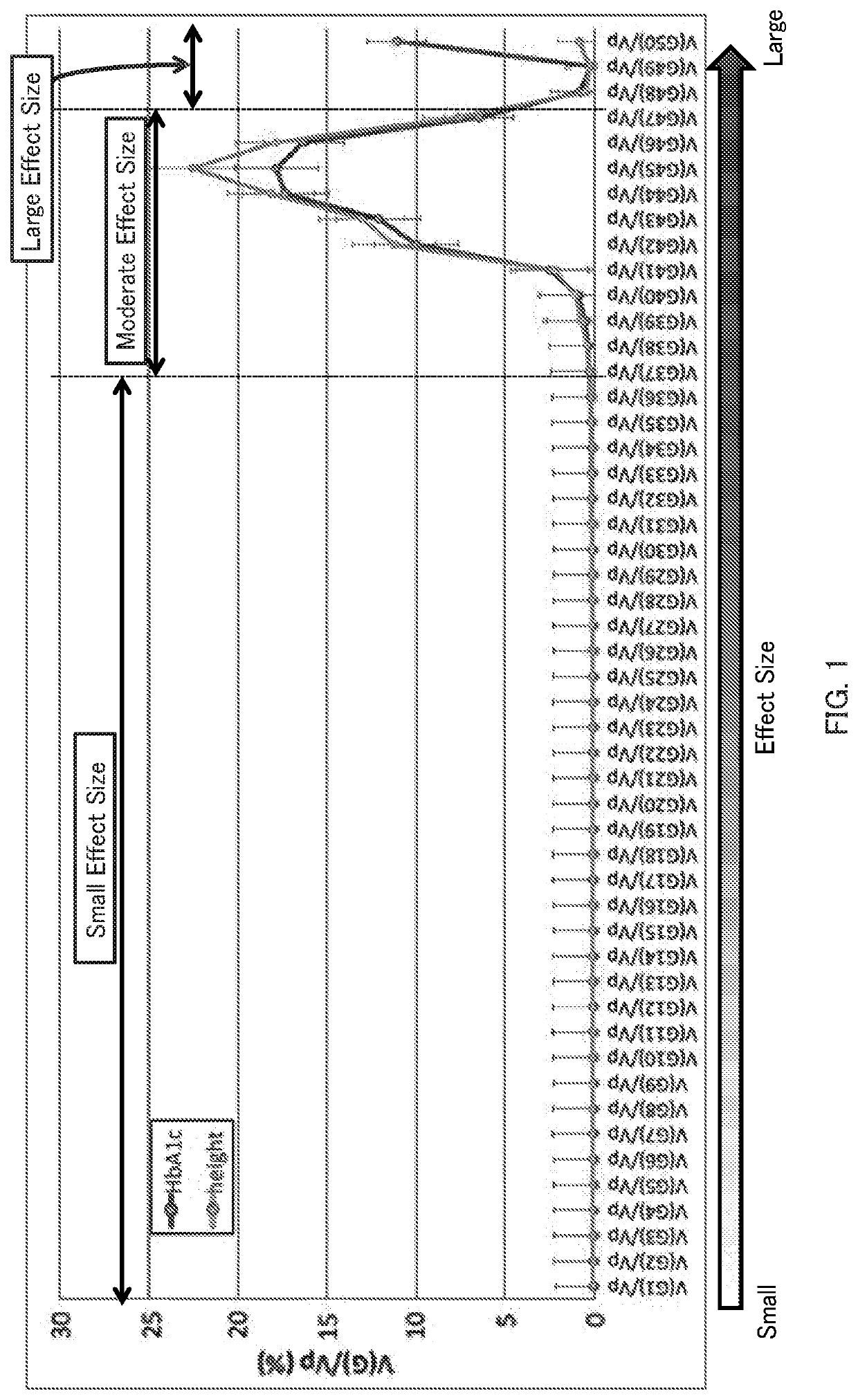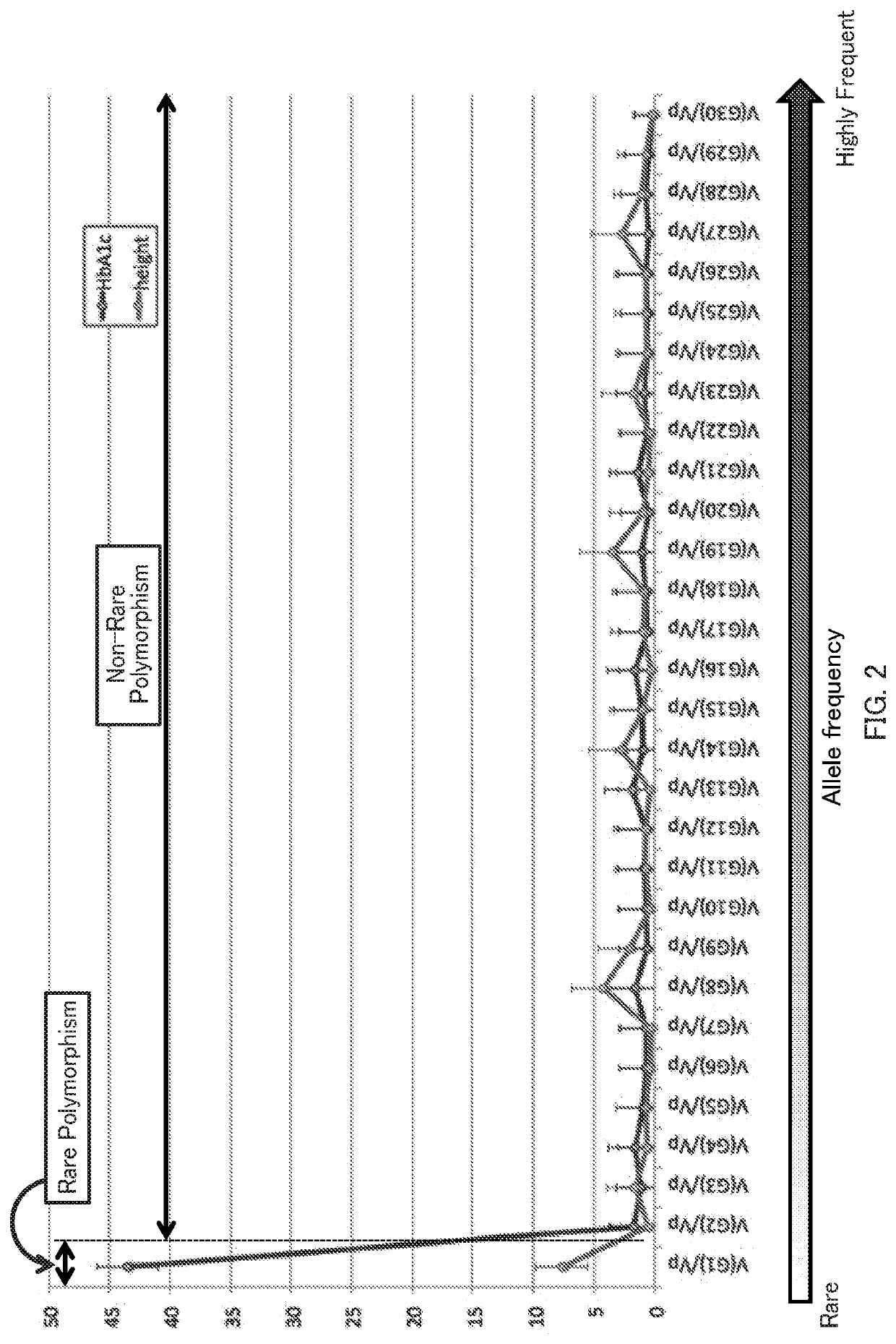Methods of creating trait prediction models and methods of predicting traits
a technology applied in the field of creating model of prediction model and model of trait, can solve the problems of insufficient accuracy of prediction method, limit of this approach, polymorphism, etc., and achieve the effect of high accuracy
- Summary
- Abstract
- Description
- Claims
- Application Information
AI Technical Summary
Benefits of technology
Problems solved by technology
Method used
Image
Examples
example 1
Method
[0051]In this example, body heights were focused as an example of a multifactorial quantitative trait. Single nucleotide polymorphism data and gender / age information collected from 4,992 individuals from April 2015 to March 2016 by the Tohoku Medical Megabank Project were used and trait prediction models were made by the method of creating a trait prediction model of the present invention (using the aforementioned (9-2) with gender / age information) to estimate heritability. Heritability was also estimated as controls for cases where no gender / age information was used and compared with those in the cases where the information was used.
[0052]Next, the accuracy of prediction by the trait prediction model was evaluated for each of the cases where (1) only the gender / age information was used; (2) only the single nucleotide polymorphism information was used; and (3) both were used (i.e., the examples of the present invention), using a 2-fold cross validation method. The coefficient ...
example 2
Method
[0056]In this example, a disease of diabetes was focused as an example of a multifactorial quantitative trait. Single nucleotide polymorphism data and gender / age information collected from 4,992 individuals from April 2015 to March 2016 by the Tohoku Medical Megabank Project were used and trait prediction models were made by the method of creating a trait prediction model of the present invention (using the aforementioned (9-2) with gender / age information). According to the results of an HbA1c test, an individual was assumed to suffer from diabetes when the level was 6.5 or higher, and assumed not to suffer from diabetes when the level was lower than 6.5. The accuracy of prediction by the trait prediction model was evaluated for each of the cases where (1) only the gender / age information was used; (2) only the single nucleotide polymorphism information was used; and (3) both were performed (i.e., the examples of the present invention), using a 2-fold cross validation method. A...
example 3
Method
[0058]In this example, HbA1c levels and body heights were focused as examples of a multifactorial quantitative trait. Single nucleotide polymorphism data collected from 4,992 individuals from April 2015 to March 2016 by the Tohoku Medical Megabank Project were used to estimate contribution ratios by the genetic architecture division method. Estimation was performed for two cases: (1) when Qes=50 and QRAF=1, and (2) when Qes=1 and QRAF=30.
Results
[0059](1) FIG. 1 shows estimated contribution ratios with Qes=50 and QRAF=1. It was estimated that the contribution ratios for single nucleotide polymorphisms with moderate effect sizes are larger and the contribution ratios for single nucleotide polymorphisms with small effect sizes are extremely small both in the case using the HbA1c levels and the case using the body heights. It was also estimated that the contributions of the single nucleotide polymorphisms with larger effect sizes are large in the case using the HbA1c levels, but t...
PUM
 Login to View More
Login to View More Abstract
Description
Claims
Application Information
 Login to View More
Login to View More - R&D
- Intellectual Property
- Life Sciences
- Materials
- Tech Scout
- Unparalleled Data Quality
- Higher Quality Content
- 60% Fewer Hallucinations
Browse by: Latest US Patents, China's latest patents, Technical Efficacy Thesaurus, Application Domain, Technology Topic, Popular Technical Reports.
© 2025 PatSnap. All rights reserved.Legal|Privacy policy|Modern Slavery Act Transparency Statement|Sitemap|About US| Contact US: help@patsnap.com



